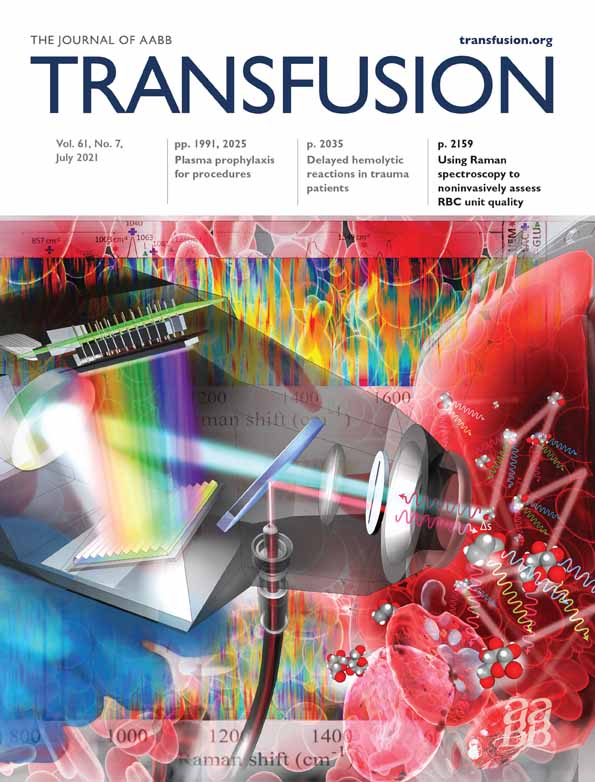Plasma trial: Pilot randomized clinical trial to determine safety and efficacy of plasma transfusions
Funding information: National Heart, Lung, and Blood Institute, Grant/Award Number: R34 HL125804
Abstract
Background
Plasma is frequently administered to patients with prolonged INR prior to invasive procedures. However, there is limited evidence evaluating efficacy and safety.
Study Design and Methods
We performed a pilot trial in hospitalized patients with INR between 1.5 and 2.5 undergoing procedures conducted outside the operating room. We excluded patients undergoing procedures proximal to the central nervous system, platelet counts <40,000/μl, or congenital or acquired coagulation disorders unresponsive to plasma. We randomly allocated patients stratified by hospital and history of cirrhosis to receive plasma transfusion (10–15 cc/kg) or no transfusion. The primary outcome was change in hemoglobin concentration within 2 days of procedure.
Results
We enrolled 57 patients, mean age 56.0, 34 (59.6%) with cirrhosis, and mean INR 1.92 (SD = 0.27). In the intention to treat analysis, there were 10 of 27 (38.5%) participants in the plasma arm with a post procedure INR <1.5 and one of 30 (3.6%) in the no treatment arm (p < .01). The mean INR after receiving plasma transfusion was −0.24 (SD 0.26) lower than baseline. The change from pre-procedure hemoglobin level to lowest level within 2 days was −0.6 (SD = 1.0) in the plasma transfusion arm and −0.4 (SD = 0.6) in the no transfusion arm (p = .29). Adverse outcomes were uncommon.
Discussion
We found no differences in change in hemoglobin concentration in those treated with plasma compared to no treatment. The change in INR was small and corrected to less than 1.5 in minority of patients. Large trials are required to establish if plasma is safe and efficacious.
CONFLICT OF INTEREST
The authors have disclosed no conflicts of interest




